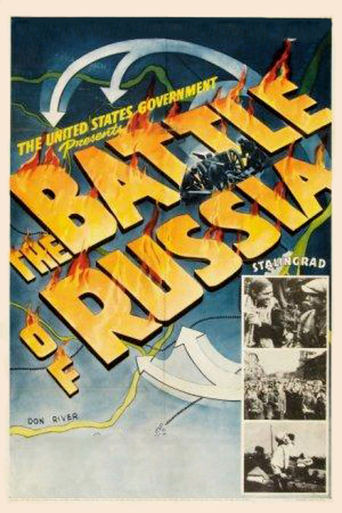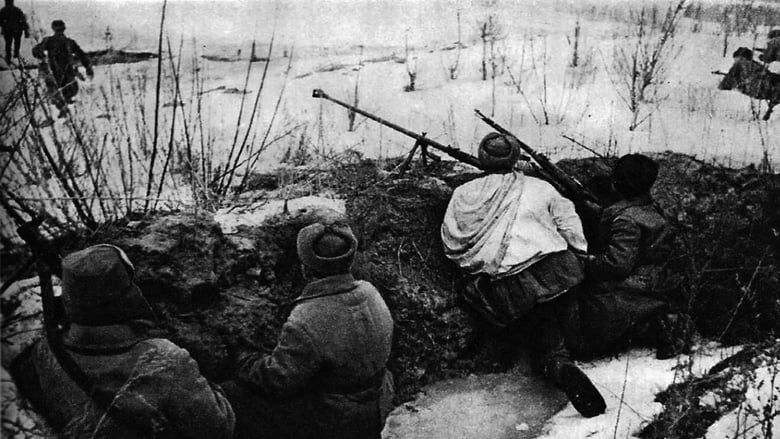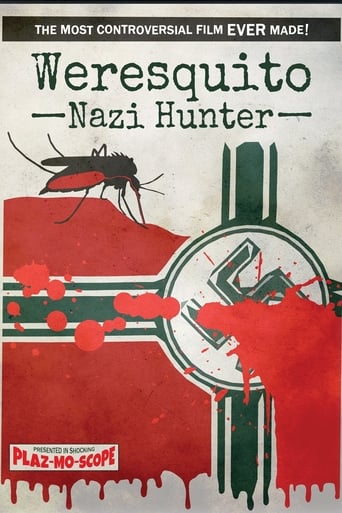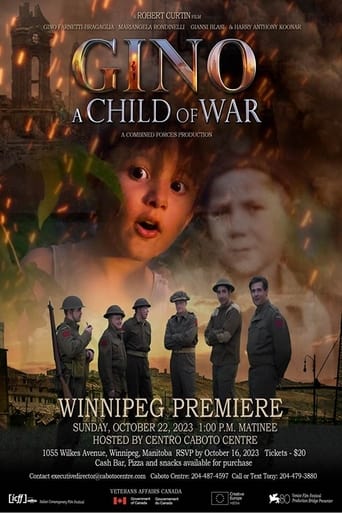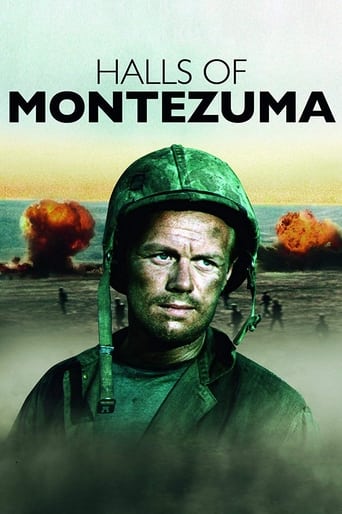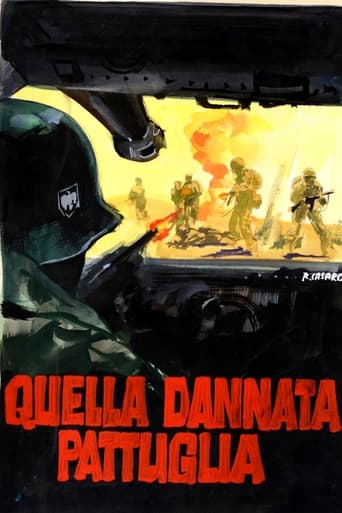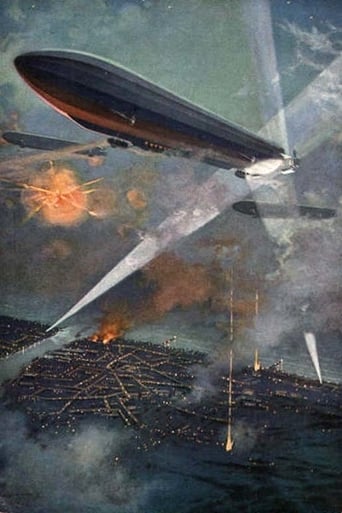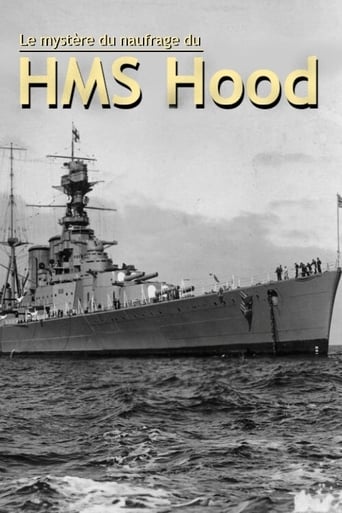Why We Fight: The Battle of Russia (1943)
The fifth film of Frank Capra's Why We Fight propaganda film series, revealing the nature and process of the fight between the Soviet Union and Germany in the Second World War.
Watch Trailer
Cast


Similar titles
Reviews
It's the kind of movie you'll want to see a second time with someone who hasn't seen it yet, to remember what it was like to watch it for the first time.
It’s fine. It's literally the definition of a fine movie. You’ve seen it before, you know every beat and outcome before the characters even do. Only question is how much escapism you’re looking for.
Very good movie overall, highly recommended. Most of the negative reviews don't have any merit and are all pollitically based. Give this movie a chance at least, and it might give you a different perspective.
An old-fashioned movie made with new-fashioned finesse.
This is the fifth of seven films in the "Why We Fight" series that was directed by Frank Capra. These pictures are documentaries as well as propaganda...with a strong emphasis on propaganda in order to bolster support for the war effort. Of the seven films, perhaps "The Battle of Russia" is the one which emphases propaganda much more than facts. Using selective information, the film makes a strong message--our friends, the Russians, are plucky and will NOT roll over for the invading Germans...and they need our help. To make message, the film strongly emphasizes some facts while ignoring the many bad things about Stalinist Russia...such as repression, the Russia-Germany non-aggression pact and Stalin himself. This isn't too surprising, as Hollywood did an about face with Russia during the war. While pre- war films, such as "Comrad X", made fun of the Soviets and mocked their system, now that they were allies in the war, a new and ridiculously idealistic view of the USSR made its way into movies such as "The North Star". After all...they were now the American's new strange bedfellow. And, it's because of the combinations of truths and many half truths and omissions that the film is only fair despite its strong message.
In 1939, Hitler signed a non-aggression pact with Russia, giving himself time to mount an offensive against the European countries to his West. With all but Britain defeated and subjugated to German rule, Hitler turned his sights once again to Russia. Russia would be extremely valuable to the Fuehrer, in terms of size, raw materials and manpower. His world view of the German master race left every other country on the planet subject to his vision of supplying slave labor for the Nazi cause.The invasion of Russia began on June 22, 1941 with the same strategy that proved so successful throughout Europe - pincer attack the enemy on opposing fronts, then circle the enemy to elicit surrender. The Russians however came up with an effective counter strategy. Rather than committing to a single line of defense, they initiated a series of defensive lines positioned one behind the other, so that if one of their positions was breached, it could join up with the one behind it to increase it's strength. Additionally, knowing the ferocity of the German army, Russia's leaders weren't as concerned about saving their cities as much as defeating the enemy. With that in mind, the Russians themselves destroyed much of their own infrastructure - fields, farms and factories - rather than have them fall into Nazi hands.With the invasion of Russia, the legend of Nazi invincibility was finally shattered. The city of Leningrad emerged from a seventeen month German siege still free, while Stalingrad, a modern Russian city named after it's (then) present day leader, Josef Stalin, also survived the Nazi onslaught. The humiliating Nazi defeat resulted in twenty three German divisions captured, a total of three hundred thirty thousand men.Yet the Russian victory came at a high cost. To see the citizens of Leningrad and Stalingrad grieve over their cities' destruction and the deaths of loved ones is excruciating. It is totally unimaginable, watching from the comfort of one's living room, to understand what it must have been like to not only survive the sub-freezing temperatures of the Russian winter, but to carry on a front line offensive at the same time. One can only imagine what America's new soldiers might have been thinking at the time as they watched these horrors unfold, while preparing to invade Europe in the name of freedom and liberty.
There has been a political documentary, of recent vintage, called Why We Fight, which tries to examine the infamous Military Industrial Complex and its grip on this nation. It is considered both polemical and incisive in making its case against both that complex and the war fiasco we are currently involved in in Iraq. Yet, a far more famous series of films, with the same name, was made during World War Two, by Hollywood director Frank Capra. Although considered documentaries, and having won Oscars in that category, this series of seven films is really and truly mere agitprop, more in the vein of Leni Reifenstal's Triumph Of The Will, scenes of which Capra recycles for his own purposes. That said, that fact does not mean it does not have vital information that subsequent generations of World War Two documentaries (such as the BBC's lauded The World At War) lacked, nor does that mean that its value as a primary source is any the less valuable. They are skillfully made, and after recently purchasing some used DVDs at a discount store, I found myself with the opportunity to select a free DVD with my purchase. I chose Goodtimes DVD's four DVD collection of the series.Rarely has something free been so worth invaluable. While there are no extras on the DVDs, and the sound quality of the prints varies, these films provide insight into the minds of Americans two thirds of a century ago, when racism was overt (as in many of the classic Warner Brothers pro-war cartoons of the era), and there was nothing wrong with blatant distortion of facts. The seven films, produced between 1942 and 1945, are Prelude To War, The Nazis Strike, Divide And Conquer, The Battle Of Britain, The Battle Of Russia, The Battle Of China, and War Comes To America.Overall, the film series is well worth watching, not only for the obvious reasons, but for the subtle things it reveals, such as the use of the plural for terms like X millions when referring to dollars, rather than the modern singular, or the most overused graphic in the whole series- a Japanese sword piercing the center of Manchuria. Yet, it also shows the complexities of trying to apply past standards to current wars. The lesson of World War One (avoid foreign entanglements) was not applicable to World War Two, whose own lesson (act early against dictatorships) has not been applicable in the three major wars America has fought since: Korea, Vietnam, nor Iraq. The fact that much of this series teeters on the uncertainties of the times it was made in only underscores its historic value in today's information-clogged times. It may not help you sort out the truth from the lies and propaganda of today, but at least you'll realize you are not the first to be in such a tenuous position, nor will you be the last.
Battle of Russia, The: Part 1 (1943) Battle of Russia, The: Part 2 (1943) ** 1/2 (out of 4)The IMDb lists this as a single movie but I'm breaking it into two since it was originally released as two parts. Frank Capra once again shows us the history of Russia in various wars plus how they fought the Nazis during WW2. This here was probably the least interesting of all the Capra docs from this period. Part one focuses on the early years of Russia and I found the storytelling quite dull and tiresome. Part two picks up with WW2 but again, I found it rather tiresome even with the actual war footage.

